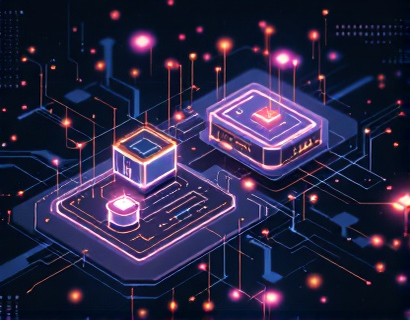Next-Gen Connectivity: Transforming Business and Personal Communication with Advanced Telecom and Internet Solutions
In the rapidly evolving landscape of technology, the role of advanced telecommunications and internet services cannot be overstated. These services are not just about connecting devices and people; they are the backbone of modern business operations and personal communication. The transition to next-generation connectivity is transforming how we interact, work, and access information. This article delves into the intricacies of how cutting-edge infrastructure and specialized software solutions are enhancing connectivity, ensuring reliable and efficient access to essential digital services.
The foundation of this transformation lies in the significant investments being made in telecommunications infrastructure. Next-generation networks, such as 5G, are being deployed to provide faster data speeds, lower latency, and greater capacity. These advancements are crucial for supporting the growing number of connected devices and the increasing demand for high-bandwidth applications. For businesses, this means seamless video conferencing, real-time data analytics, and enhanced customer experiences. Individuals benefit from faster downloads, smoother streaming, and more reliable online interactions.
One of the key components of next-generation telecom infrastructure is the deployment of small cells and dense network architectures. Small cells are low-power base stations that cover smaller areas, allowing for better coverage and capacity in densely populated urban areas. This approach helps to alleviate network congestion and ensures a more consistent and high-quality connection for users. Additionally, the integration of fiber-optic cables into the network provides a robust and high-speed backbone, essential for delivering the promised benefits of next-gen connectivity.
Software solutions play a pivotal role in complementing the hardware infrastructure. Advanced network management systems enable service providers to monitor and optimize network performance in real-time. These systems use artificial intelligence and machine learning algorithms to predict and prevent network issues, ensuring minimal downtime and maximum efficiency. For businesses, this translates to a more reliable and secure network environment, which is critical for maintaining operational continuity and protecting sensitive data.
Another significant area of innovation is in the realm of edge computing. By processing data closer to the source, edge computing reduces latency and improves response times for applications that require real-time processing. This is particularly beneficial for industries such as healthcare, where remote monitoring and telemedicine rely on instant data transmission. For businesses, edge computing enables faster decision-making and more efficient operations, while for individuals, it enhances the performance of apps and services that require immediate feedback.
The integration of Internet of Things (IoT) devices is further transforming connectivity. IoT devices, ranging from smart home appliances to industrial sensors, generate vast amounts of data that need to be transmitted and processed efficiently. Advanced telecom solutions ensure that this data is handled with high reliability and security. For businesses, IoT integration can lead to smarter operations, predictive maintenance, and improved customer service. Individuals enjoy a more connected and convenient lifestyle, with smart devices enhancing daily routines and safety.
Security is a paramount concern in the realm of next-generation connectivity. As more devices and services become interconnected, the risk of cyber threats increases. Advanced telecom providers are implementing robust security measures, including encryption, intrusion detection systems, and regular security audits. These measures protect both business and personal data from unauthorized access and breaches. For businesses, a secure network is essential for maintaining customer trust and complying with regulatory requirements. For individuals, it ensures privacy and peace of mind when using connected devices and services.
The impact of advanced telecom and internet solutions extends beyond just technical improvements. They are driving economic growth and fostering innovation across various sectors. For businesses, enhanced connectivity enables the adoption of new technologies and business models, such as remote work, cloud computing, and digital transformation. This not only improves operational efficiency but also opens up new markets and revenue streams. For individuals, the benefits include access to a wealth of information, educational resources, and entertainment, bridging the digital divide and promoting inclusivity.
In the educational sector, next-gen connectivity is revolutionizing the way learning occurs. Online classrooms and virtual labs powered by high-speed internet and low-latency networks provide students with immersive and interactive learning experiences. Teachers can leverage real-time data and analytics to tailor instruction to individual needs, enhancing the learning process. For students, this means access to quality education regardless of their geographical location, leveling the playing field and promoting equal opportunities.
Healthcare is another sector that stands to gain immensely from advanced connectivity. Telemedicine services, enabled by reliable and fast internet connections, allow patients to consult with healthcare professionals remotely. This is particularly valuable in rural and underserved areas where access to medical care is limited. Remote monitoring of patients with chronic conditions also benefits from real-time data transmission, enabling timely interventions and better health outcomes. For businesses in the healthcare industry, these advancements mean improved patient care and operational efficiency.
Smart cities are another area where next-gen connectivity is making a significant impact. Integrated sensors and connected devices collect data on traffic, pollution, energy usage, and more, providing city planners with valuable insights for optimizing urban infrastructure. This data-driven approach leads to more sustainable and efficient cities, improving the quality of life for residents. For businesses operating in urban areas, smart city initiatives can enhance logistics, reduce costs, and attract more customers.
The environmental benefits of advanced telecom and internet solutions should not be overlooked. By optimizing network operations and promoting the use of energy-efficient devices, these technologies contribute to reduced carbon footprints. For businesses, adopting green telecom practices can enhance their corporate social responsibility and appeal to environmentally conscious consumers. For individuals, the use of energy-efficient devices and services helps to reduce personal energy consumption and support a more sustainable future.
As the demand for advanced connectivity continues to grow, the role of policy and regulation becomes increasingly important. Governments and regulatory bodies must strike a balance between fostering innovation and ensuring fair competition and consumer protection. This includes setting standards for network performance, data privacy, and security. Collaboration between industry stakeholders, policymakers, and consumers is essential to create an environment that supports the continued development and deployment of next-gen connectivity solutions.
In conclusion, the advancements in telecommunications and internet services are fundamentally transforming the way businesses and individuals connect and communicate. Through the deployment of advanced infrastructure and the development of sophisticated software solutions, next-gen connectivity is ensuring reliable, efficient, and secure access to digital services. The benefits span across various sectors, driving economic growth, enhancing educational and healthcare services, and promoting sustainable urban development. As we move forward, the continued innovation and collaboration in this field will be crucial for harnessing the full potential of next-generation connectivity.










































